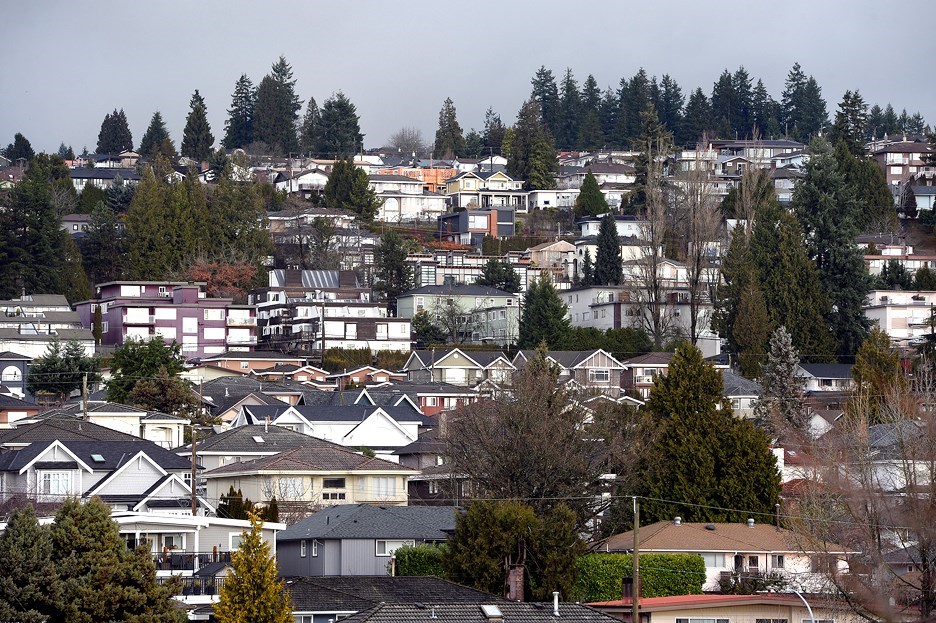With the B.C. government prepared to impose provincewide zoning regulations to densify single-family detached home neighbourhoods, Metro Vancouver is launching a study that may help answer the cost of doing so.
Eric Aderneck, Metro Vancouver’s senior planner in the regional planning and housing services division, will help shed light on the costs of providing infrastructure and services to different forms of housing.
The study will look at costs associated with three general types of development, each at different densities: construction in existing urban areas; development of new suburban housing on so-called “greenfields” and infill development of existing neighbourhoods.
Infill housing — where one detached home is rebuilt into a structure with multiple units, or when homes are re-developed into townhouses (via a “land assembly”) — is the goal of the provincial government where municipalities have failed to implement it already.
When a neighbourhood densifies it must factor in sewer and road maintenance and expanded needs of a larger population, such as police, fire and community services.
The question, according to some mayors, is, who will pay for this and how feasible is such a plan?
Aderneck’s study, according to his his report to Metro Vancouver’s regional planning board April 14, “will explore the ‘hard’ and ‘soft’ municipal and regional infrastructure/servicing capital and operating costs (i.e. roads, water, sanitary, sewerage, park, as well as other local government services such as recreation, policing, fire, etc.) for different residential forms, densities, and locations of housing.”
Aderneck will compare how the different development models impact property taxation, utility fees and other revenues, on a per unit or per capita basis.
Urban planner Andy Yan, program director for the City Program at Simon Fraser University, said it is more likely than not the study will provide some baseline data on how much development and community amenity cost charges will be required.
“You can imagine the physical transportation and social aspects that are going to be implicated in terms of expanding density in these neighborhoods across the region.
“I think some [cities] are going to be much more able to adapt than others. But it also comes at a time when you want to see this type of infrastructure deal with a growing population …as well as, frankly, climate change and earthquakes,” said Yan.
“It's better to do these studies than guessing,” summarized Yan.
This month, members of the Union of BC Municipalities heard from B.C. cities already embarking on so-called “gentle density” or “missing middle” housing, whereby traditional detached homes can be re-developed to incorporate multiple stratified units — think duplexes, triplexes and quadplexes — or simple secondary suites.
Aderneck has provided some links to studies and media reports from other jurisdictions handling the same issues.
A City of Saskatoon report found “infill development is very cost effective if existing infrastructure has unused capacity and can lead to improved transit usage;” however, it warned that developers may find fewer impediments to developing new tracts of land.
An Australian study, reported by ABC News in 2016, asserted “the cost to government to provide infrastructure including roads, water, communications, power, health, education and emergency services in greenfield sites was $150,390 compared to $55,830 in infill sites.”
Metro Vancouver, however, has an urban containment boundary that strictly limits such “greenfield” development, unless a significant majority of board directors (made up of local council members) approves amendments.
The study will not compare costs and revenues of services by municipality within the region; rather, that will have to be done by each city hall, should the provincial regulations impact them, as is expected. Nor will the study recommend development cost charges (DCC) and community amenity charges (CAC).
The City of Kelowna's webpage for its infill housing program hints at scale of costs for such a city, noting each new unit may cost between $20,000 and $50,000 for DCC. Additionally, new homes would have to pay for upgrading sewer and water lines, sidewalks and street lighting.



